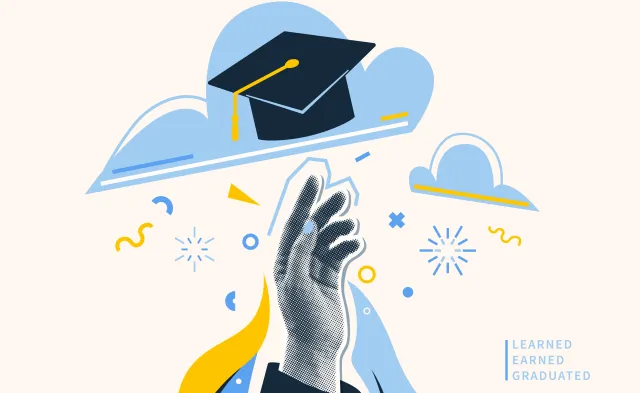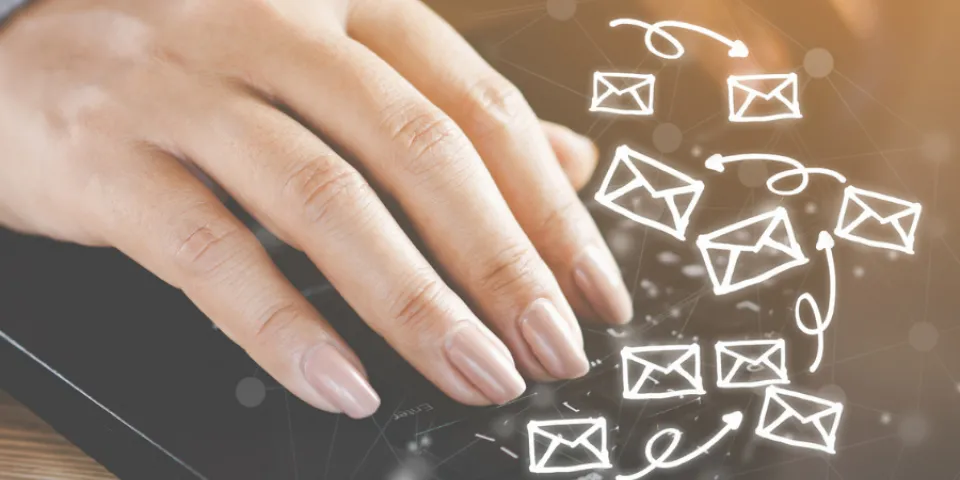Latest 
 Career Development Denise Alexander
Career Development Denise Alexander
Recent Blog Posts


When looking for a new job, completing the interview is exciting, but it’s only part of the journey. Yes, you’re one step closer to the job offer, but it is not the end of the hiring process. You’ll need to implement a strategic and thoughtful follow-up strategy to demonstrate your interest and stay on the employer’s radar without coming off as annoying, desperate or aggressive.
At the end of the interview, it is important to ask about the employer’s timeline or “what are the next steps?” so you have a good idea of when to expect to hear back from them. Then, your follow up strategy begins.
Below, our Career Development team at Herzing University, shares tips on how and when to follow up to differentiate yourself from other candidates.
Within 24 hours after the interview, your first follow-up should be a “Thank You” email. When possible, send a separate email to every person you interviewed with. If you were unable to get email addresses at the interview, you can reach out to Human Resources or the person who coordinated the meetings and ask if they will provide their email addresses so you can send thank you notes.
It is important to send a “Thank You” because job interviews can require employers to set aside a significant amount of time preparing for and interviewing. Keep the email brief, friendly and conversational; since you’ve already had the job interview, you can let your gratitude and personality show.
The “Thank You” email is also your opportunity to:
Here’s an example:
Subject line: [Thank You - IT Position Follow Up]
“Hi Jane,
Thank you for meeting with me today/yesterday. It was a pleasure to speak with you and Michael and learn more about the IT position at X Company. I’m excited about the potential opportunity to work with you and the team!
Discussing the IT position allowed me to further reflect on my interest in this opportunity. I think you will find my XYZ skills/experience to be a valuable asset to your team. Because of my professional experience and time in the IT field, I will be effective on day one and start making an impact quickly.
Please let me know if there is additional information I can provide to help in your decision-making process. Thank you again, and I look forward to hearing from you soon.
Warm regards,
John”
Keep in mind that you might not receive a response to your email, which is perfectly normal and does not have any bearing on your offer.
Pro Tip: in addition to the “Thank You” email, consider sending a handwritten card in the mail. This adds a personal touch and shows that you appreciate and value the employer’s time. The reason for this is that in addition to the email, you want to be certain that they receive a follow up from you within 24 hours. Emails are time-stamped and more likely to be read, whereas mail can take several days and could end up in a stack of mail that doesn’t get read for a while.
Are you feeling bold? Instead of sending an email, make a “Thank You” phone call! The personal touch of a short follow up conversation (or voicemail), where you thank the employer for the interview shows how proactive and assertive you are as a professional. It also strongly iterates your interest in the role and your ability to take initiative to go above and beyond to connect with others.
This is where you will use the employer’s timeline to gauge the frequency of your follow-up strategy. Please know that checking in will not make you seem annoying, desperate or aggressive. This type of follow up is a regular, professional, and quite frankly, expected part of the hiring process. Employers want to hire candidates that want to work for them and approaching your follow-up carefully clearly demonstrates your professionalism, diligence and interest.
For example, you interviewed on a Monday, and the employer said they planned on getting back to you on Friday of that same week. Then, Friday rolls around and… crickets. If you don’t hear back when the employer originally said you would try not to jump to the conclusion that you did not get the job. Simply send a quick follow-up email on the next business day:
Subject line: [Thank You - IT Position Follow Up]
“Hi Jane,
I hope all is well! Thank you again for taking the time last week to interview me for the IT position. I remain very interested in this opportunity and am eager to hear when you have an update. Please let me know if there is anything else I can provide to assist you in your decision-making process.
Sincerely,
John”
Sometimes employers will underestimate their timeline, especially if they have a lot going on. Of course, they would like to decide by Friday, but the hiring process and other work obligations could push back their timeline.
After your initial check-in email, it is recommended to follow up every two weeks until you receive an answer on your candidacy or until asked otherwise by the employer. Following up more frequently puts you in the danger zone of coming off as annoying. It is acceptable and expected to receive updates about the role and if you were selected or not.
Pro Tip: Even though Jane said she wanted to decide by Friday, DO NOT call her out on that in your email. Avoid any type of messaging that sounds like “you mentioned that you would be finalizing your decision for the IT position this week.” This could turn an employer off as it draws attention to what they are already aware of and probably not thrilled about. Always be patient and gracious with employers during the hiring process. In subsequent follow-ups, offer to help by providing additional information such as letters of recommendation, written examples of project plans you’ve developed or cases you’ve solved.
Feeling Bold? Alternate your check-ins with emails and phone calls. This will prevent the employer from becoming numb to your correspondence and will allow you to interact with the employer in more than one way that positively reflects on your ability to follow through and build relationships.
Congratulations! Your efforts and patience have paid off and you received the job offer. If you haven’t already discussed your salary and benefits, now is the time to negotiate if needed.
Typically, a job offer is made verbally over the phone, followed by an official offer letter. Please note that your offer is not official until you receive the formal letter. Make sure to respond with a written letter of acceptance in an email where you officially agree to the terms of the job offer.
Subject line: [*Your Name* - Offer Acceptance]
Dear Jane,
I am writing to formally accept your offer of IT Administrator at X Company. I am very grateful for the opportunity and delighted to be joining the team.
As the offer letter displays and as we previously discussed on the phone, I accept the starting salary of $XX,000 with the availability of benefits after XX days of employment.
I will be able to start work on DATE. If there is any additional information or paperwork needed before then, please let me know. You can reach me at (XXX) XXX-XXXX or by email at john.doe@website.com.
Thank you very much for the opportunity!
Kind regards,
John Doe
Lastly, if you’re notified that you aren’t selected for the role, feel free to follow up one last time thanking the employer for their time and letting them know you’d be interested in future positions at the company. This again shows your professionalism and willingness to go the extra mile. You never know when they may be hiring again, and employers often revisit past candidates who could be a good fit.
For personalized assistance with the interview and follow-up process, Herzing University students and alumni can always reach out to our career development services team.
BLS pay estimates calculate the median annual wage for various occupations. Per the BLS the median wage for an occupation is: "The wage at which half of the workers in the occupation earned more than that amount, and half earned less. Median wage data are from the BLS Occupational Employment and Wage Statistics survey." Bureau of Labor Statistics (BLS), U.S. Department of Labor, Occupational Outlook Handbook 2024. BLS median wage estimates do not represent entry-level wages and/or salaries. Multiple factors, including prior experience, age, geographic market in which you want to work, and degree level and field, will affect career outcomes, including starting salary and earnings as an experienced employee. Herzing neither represents that its graduates will earn the median salaries calculated by BLS for a particular job nor guarantees that graduation from its program will result in a job, promotion, particular wage or salary, or other career growth.
Get the latest news you need to know, from study hacks to interview tips to career advancement. Have it delivered right to your inbox biweekly.